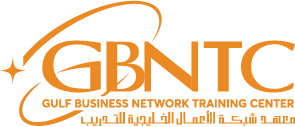In today’s plumbing systems, ensuring clean and safe water supply is paramount. One of the key components in safeguarding water sources is the use of anti-backflow technology. The correct setup not only protects public health but also complies with installation requirements set forth by regulatory bodies. For more detailed information on the different types of protective measures available, check out this guide on protective mechanisms.
This technology helps maintain the integrity of potable water, preventing contamination from undesirable substances. Regular maintenance schedules are equally important, as they ensure these systems function correctly and reliably over time, thereby enhancing water safety standards. By prioritizing system upkeep and adhering to guidelines, property owners can significantly mitigate risks associated with water quality.
Identifying Common Risks Associated with Backflow Contamination
Contamination in water systems can manifest from various sources, often leading to severe health complications. Understanding these contamination risks is paramount for ensuring safe water supplies. Regular testing procedures are vital in detecting potential issues before they escalate. Engaging professional services to conduct thorough assessments of your system is crucial for identifying vulnerabilities.
Check valves play a significant role in maintaining water integrity by preventing reverse flow. However, improper installation requirements can compromise their functionality, amplifying contamination hazards. Adhering to code compliance is essential for safeguarding public health and ensuring reliable system performance. It is important to regularly evaluate these components to mitigate risks effectively.
Criteria for Selecting the Right Backflow Control Mechanism
Choosing the appropriate cross-connection control apparatus requires careful evaluation of unique circumstances and needs. Key factors include application type, fluid characteristics, and environmental conditions. Researching selection criteria is advisable to ensure optimal performance.
Furthermore, understanding maintenance schedules and proper testing procedures is crucial for sustaining functionality. Regular assessments help in identifying potential contamination risks that may arise due to improper installation or malfunctioning components.
Be mindful of installation requirements that may vary depending on local regulations and industry standards. Ensuring adherence to code compliance is mandatory for every set-up, as it influences both safety and functionality.
Additionally, evaluating different types of check valves available in the market is critical. Each type has specific applications where it excels, and selecting one based on its efficiency can prevent potential issues.
Explore VIP tables on https://bothamplumbingandheating.com/ for high roller thrills.
Lastly, engaging professional services for installation and maintenance guarantees that your system operates at peak efficiency and minimizes any associated risks.
Local Regulations and Compliance Requirements
Compliance with local regulations is paramount for ensuring safe water systems. Each jurisdiction has specific code compliance guidelines that dictate the installation requirements for backflow prevention technologies. Knowledge of these regulations is essential for property owners and managers to avoid penalties and ensure safety. For professional services and guidance, visit https://bothamplumbingandheating.com/.
Regular maintenance schedules must be adhered to in accordance with local standards. This includes the inspection and testing of check valves to ensure their proper function. Failure to comply can lead to contamination risks, impacting public health protection. Staying informed about the latest regulations helps in maintaining systems effectively and safeguarding the community.


Comments are closed